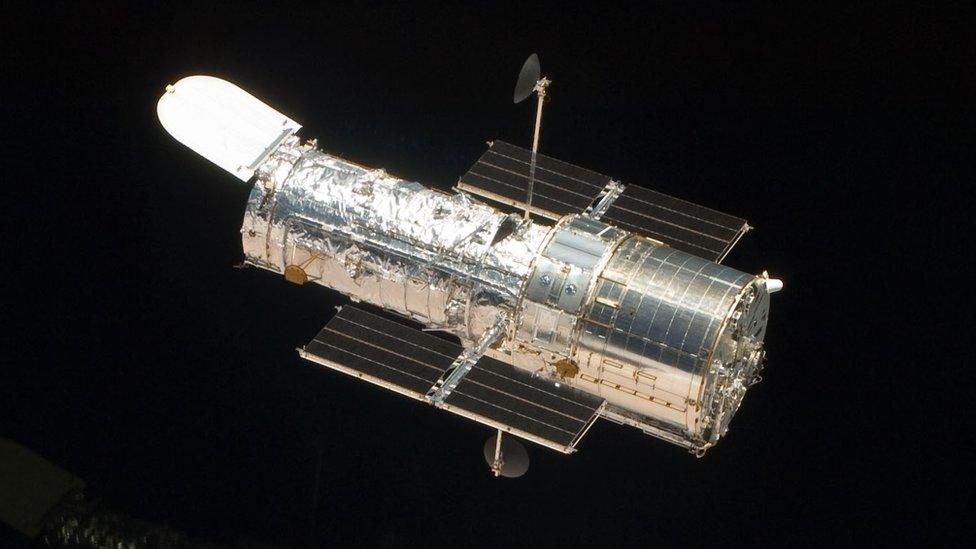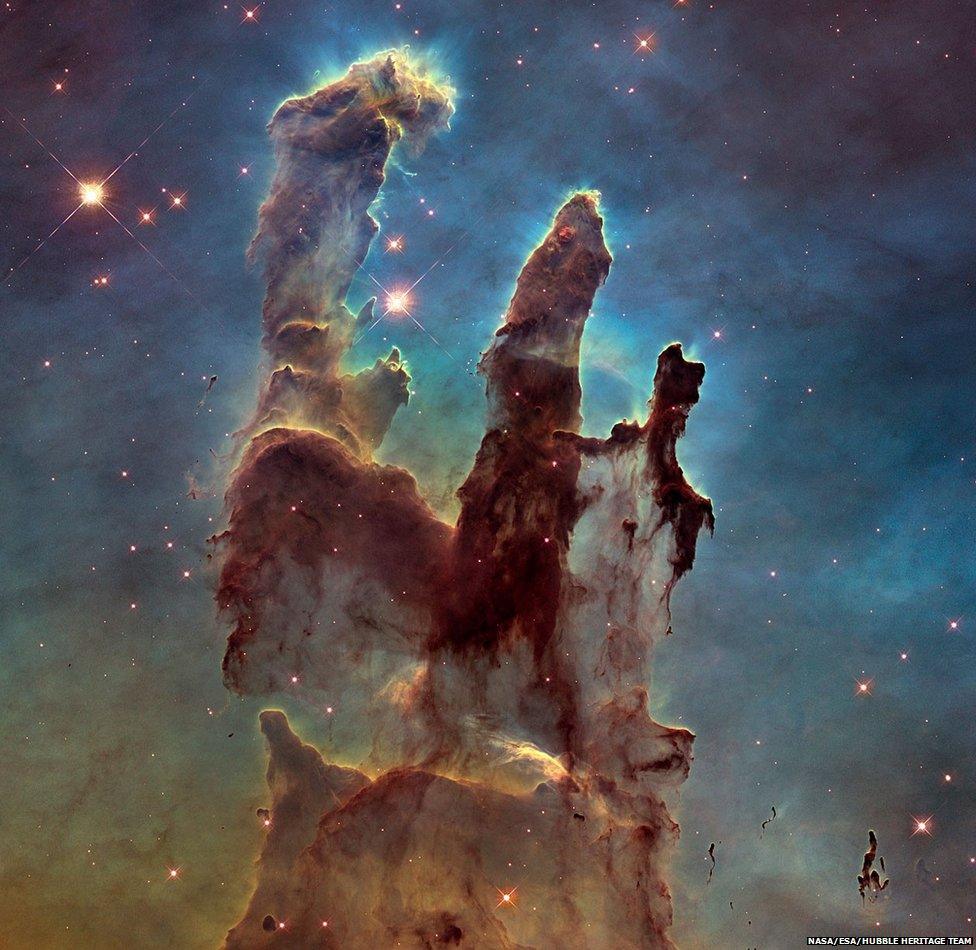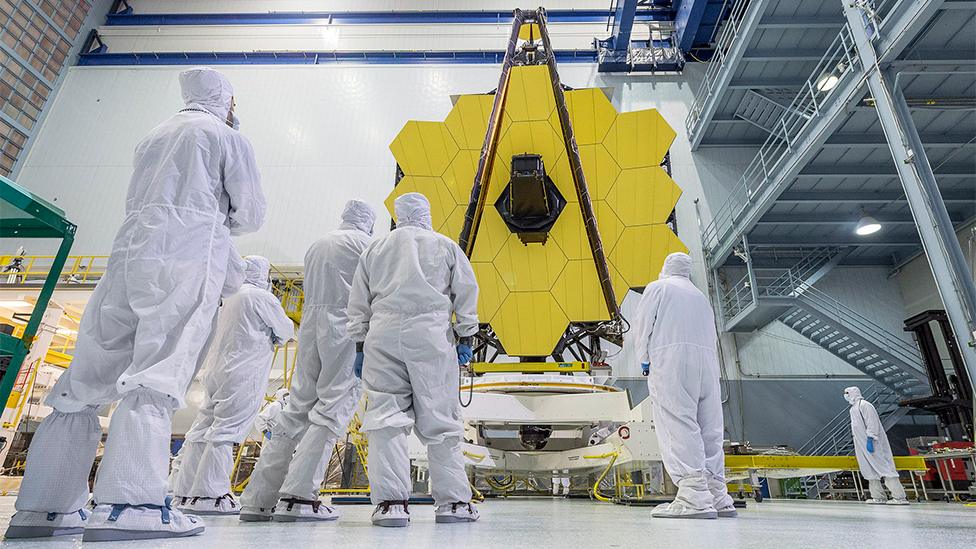Hubble telescope hit by mechanical failure
- Published

Hubble has been been operational for 28 years
The Hubble Space Telescope is operating with only essential functions after it lost one of the gyroscopes needed to point the spacecraft.
The observatory, described as one of the most important scientific instruments ever created, was placed in "safe mode" over the weekend, while scientists try to fix the problem.
Hubble had been operating with four of its six gyroscopes when one of them failed on Friday.
The telescope was launched in 1990.
After the gyro failure at the weekend, controllers tried to switch on a different one, but that was found to be malfunctioning. That leaves Hubble with only two fully functional gyros.
At any given time, Hubble needs three of its gyroscopes to work for optimal efficiency.
Allow X content?
This article contains content provided by X. We ask for your permission before anything is loaded, as they may be using cookies and other technologies. You may want to read X’s cookie policy, external and privacy policy, external before accepting. To view this content choose ‘accept and continue’.
What can they do to fix Hubble?
Operators will now try to revive the gyroscope that malfunctioned when flight controllers tried to bring it online to replace the failed one.
If the "misbehaving" gyroscope turns out not to work, the orbiting observatory may have to operate on one. This would conserve the remaining gyros for as long as possible, but would restrict the telescope somewhat.
Dr Rachel Osten, deputy mission head for the Hubble Space Telescope, tweeted: "Very stressful weekend. Right now HST is in safe mode while we figure out what to do. Another gyro failed. First step is try to bring back the last gyro, which had been off, and is being problematic."

There is great demand from astronomers to use Hubble
On the question of switching to one gyro, she added: "The plan has always been to drop to 1-gyro mode when two remain. There isn't much difference between 2- and 1, and it buys lots of extra observing time. Which the Astro community wants desperately."
Prof Nial Tanvir, from Leicester University, UK, told BBC News: "You can in principle, with relatively little impact, continue to observe with one gyro. It may place some limitations on which part of the sky you can look at at any one time, and take a little longer to move from one target to another."
He explained: "In that sense, it's not a catastrophe. However, if it's indicating another component on the telescope has died now, it does lead you to believe that the clock is ticking away on the overall lifetime… it would be a very great shame."
What about Hubble's replacement?

The James Webb Space Telescope will launch no earlier than 2021
The space telescope is highly prized by the astronomical community, and observing time has to be carefully managed because of the high demand.
The James Webb Space Telescope (JWST) is Hubble's designated successor, but it has experienced a series of delays and will not launch until 2021, at the earliest.
Astronomers have recently been talking about how they can extend Hubble's life so that it could continue to serve the astronomy community.
"In many respects, James Webb is going to be very superior to Hubble, but not in every respect," said Prof Tanvir.
"There are some things we're only going to be able to do with Hubble for the foreseeable future. So, there's been a great hope in the astronomical community that Hubble could continue doing that sort of science even when James Webb was launched."

Hubble has revolutionised our understanding of the cosmos
Gyros have been Hubble's 'Achilles heel'?
Hubble has two types of gyroscope. Three of an older kind, and three newer gyros that were expected to last five times longer.
The older kind had caused numerous problems over the years; the one which failed on Friday was the last of these original gyros.
However, when one of the newer gyros was switched on, it misbehaved. Mission team members are hopeful it can be brought back, but this is by no means guaranteed.
Controllers now need to decide whether to operate Hubble in a two-gyro mode, and when one of those fails switch to one, or - alternatively - run it using one gyro, wait for that to fail before switching the last one on.
Dr Osten implied the issues with the gyros were completely in line with expectations.
She tweeted: "We knew it was coming. The gyro lasted about six months longer than we thought it would (almost pulled the plug on it back in the spring). We'll work through the issues and be back."
Follow Paul on Twitter., external